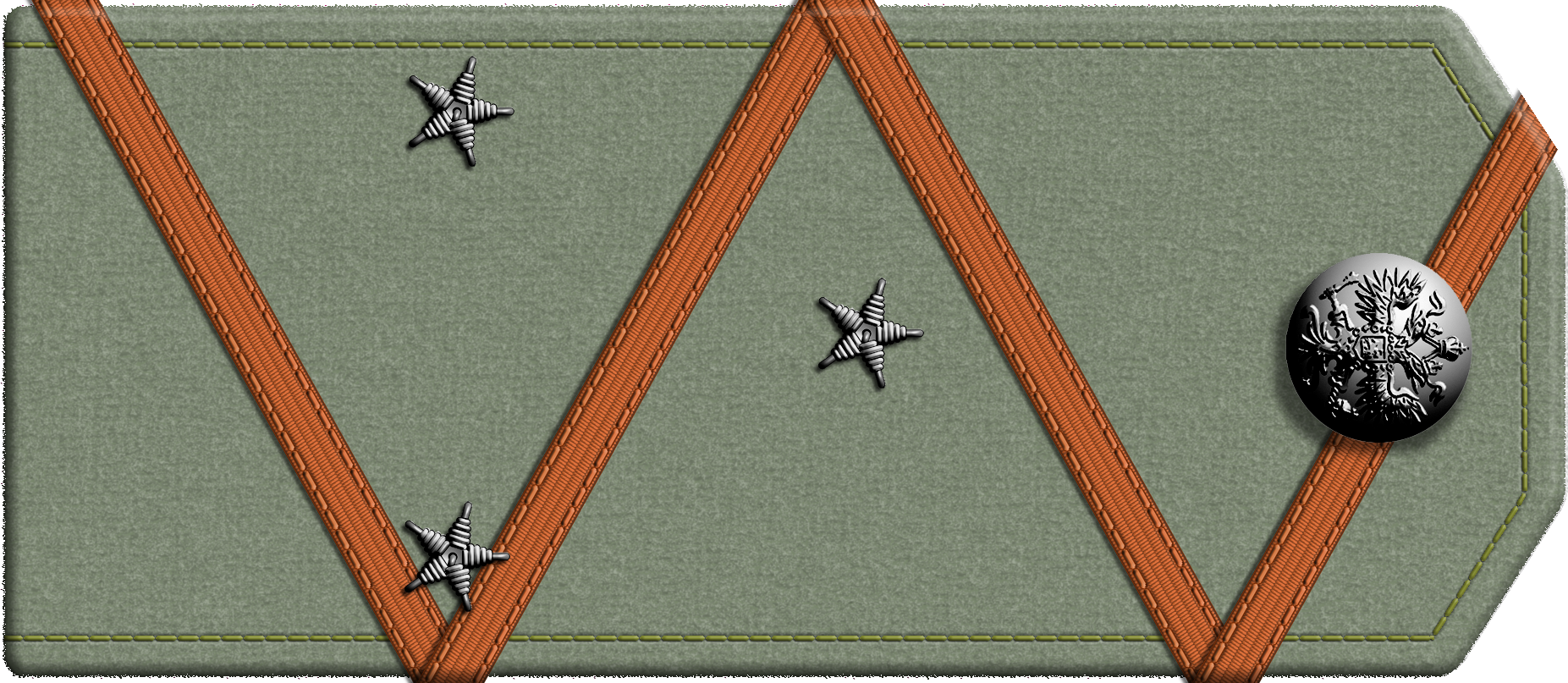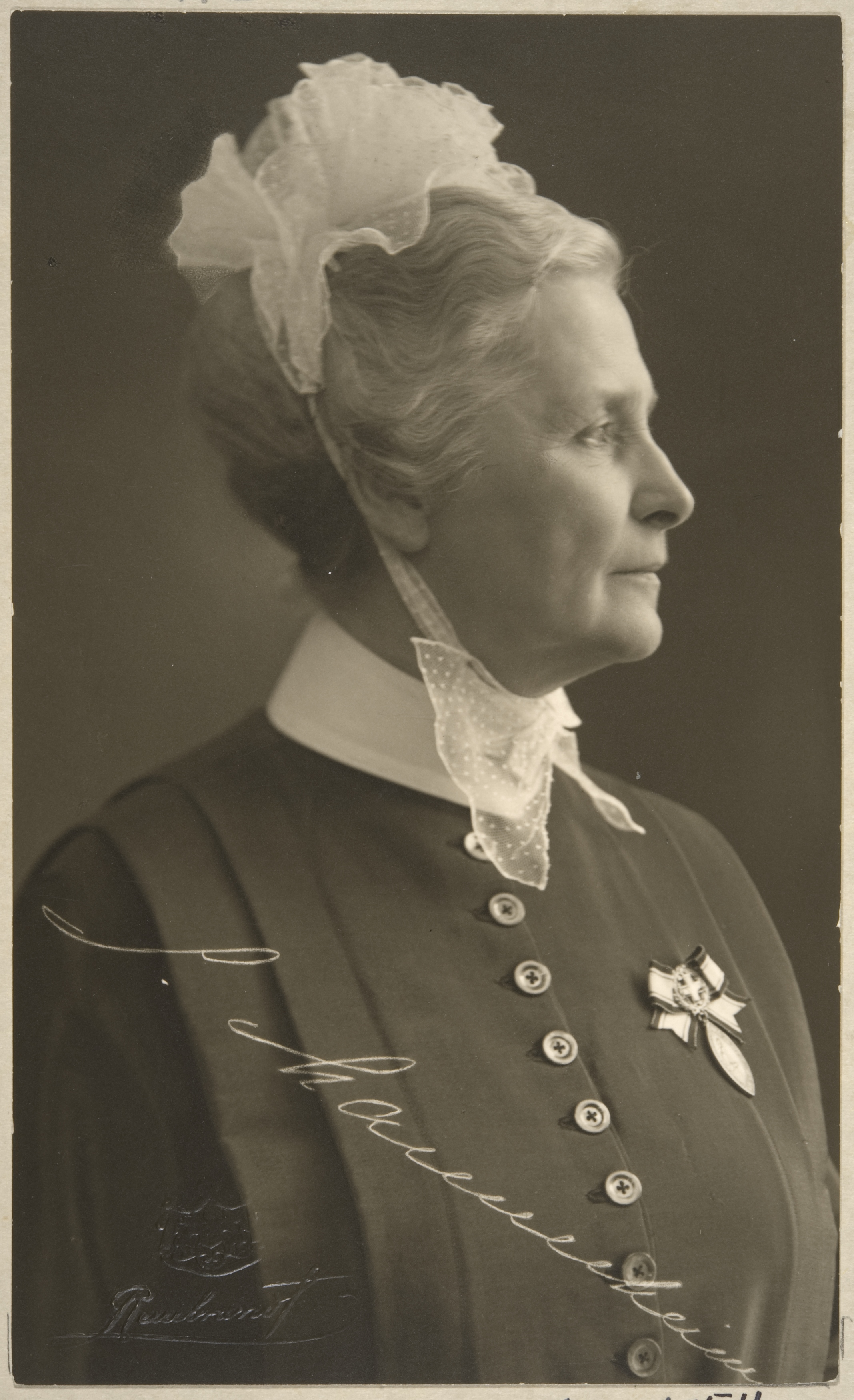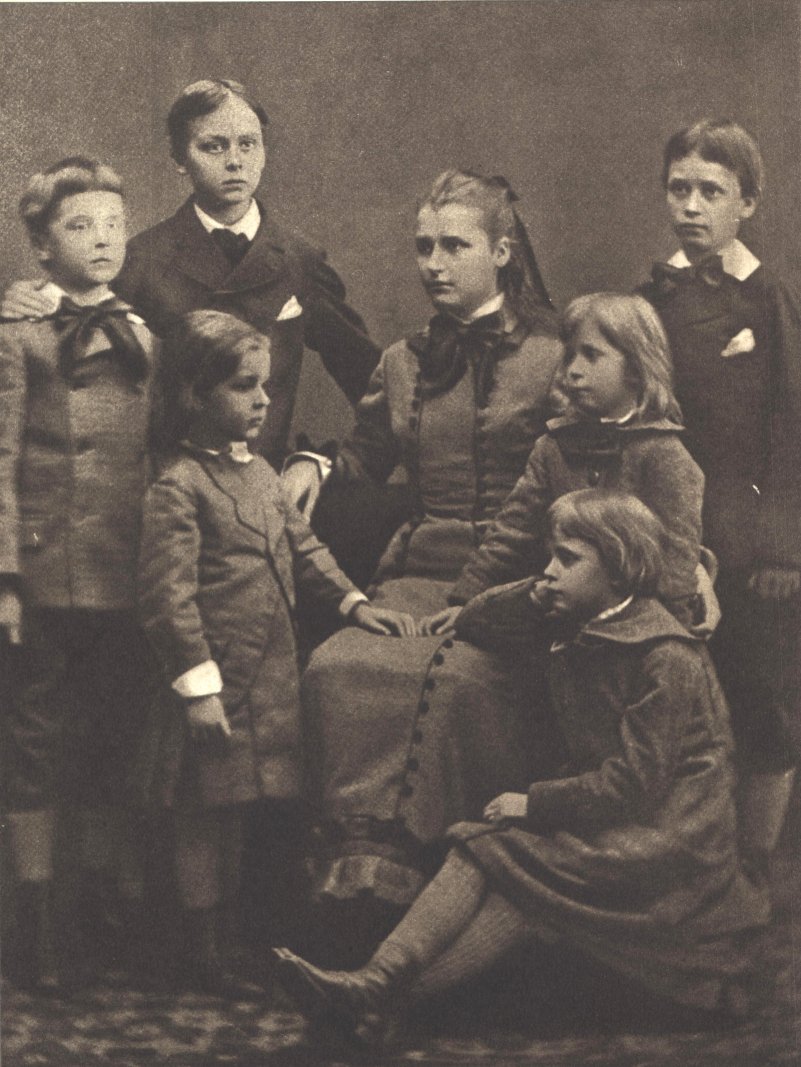|
Mannerheim
Baron Carl Gustaf Emil Mannerheim (, 4 June 1867 – 27 January 1951) was a Finnish military commander, aristocrat, and statesman. He served as the military leader of the Whites in the Finnish Civil War (1918), as Regent of Finland (1918–1919), as commander-in-chief of the Finnish Defence Forces during World War II (1939–1945), and as the sixth president of Finland (1944–1946). He became Finland's only field marshal in 1933 and was appointed honorary Marshal of Finland in 1942. Born into a Swedish-speaking family in the Grand Duchy of Finland, Mannerheim made a career in the Imperial Russian Army, serving in the Russo-Japanese War and the Eastern Front of World War I and rising by 1917 to the rank of lieutenant general. He had a prominent place in the 1896 coronation ceremonies for Emperor Nicholas II and later had several private meetings with him. After the Bolshevik coup of November 1917 in Russia, Finland declared its independence on 6 December, but soon became ... [...More Info...] [...Related Items...] OR: [Wikipedia] [Google] [Baidu] |
Carl Gustaf Mannerheim (naturalist)
Count Carl Gustaf Mannerheim (10 August 1797 – 9 October 1854) was a Swedish-speaking Finns, Finnish nobleman, amateur entomologist and governor of the Viipuri province in the Grand Duchy of Finland. He collected beetles from across the Arctic region from Alaska to Russia through northern Scandinavia making use of a network of aristocratic amateurs and Finnish settlers resulting in a personal collection of nearly 100000 specimens of beetles representing 20,000 species made over a period of 40 years. Life and career Mannerheim was born in Askainen, the son of Vendla Sofia von Willebrand and Count Carl Erik Mannerheim (1759–1837), the first vice-chairman of the finance ministry of the senate, now equivalent to being the Prime Minister of Finland. He graduated from the University of Turku in 1819 where he was influenced by the teaching of C. R. Sahlberg. Shortly after graduating he became the secretary to the Finnish Minister Secretary of State in Saint Petersburg. In 1833 he was ... [...More Info...] [...Related Items...] OR: [Wikipedia] [Google] [Baidu] |
Mannerheim (family)
The Mannerheim family (originally Marhein) also spelled von Mannerheim is the name of a prominent noble family of German origin, which was part of Finnish, Swedish, and German nobility. Lineage Baronial lineage (number 18 in the register of the Finnish House of Nobility) The family descends from a German businessman and mill owner, Henrik Marhein (1618–1667), who emigrated to Gävle, Sweden. His son, Augustin Marhein, was raised to the nobility in Sweden in 1693. He was introduced to the Riddarhuset as a member of the Untitled Nobility (''adliga ätter''), being introduced under number 1260, and with the surname Mannerheim. His son, an artillery colonel and a mill supervisor, Johan Augustin Mannerheim (1706–1778), was raised to the rank of Baron at the same time with his brother in 1768. Johan Augustin was introduced in 1776 under number 277. His son Baron Carl Erik Mannerheim came to Finland in the latter part of 18th century and the family was immatriculated in Finl ... [...More Info...] [...Related Items...] OR: [Wikipedia] [Google] [Baidu] |
Carl Robert Mannerheim
Count Carl Robert Mannerheim (1 February 1835 – 9 October 1914) was a Finnish aristocrat and businessman. He was the son of naturalist Carl Gustaf Mannerheim, and father of Marshal Carl Gustaf Emil Mannerheim. Biography Mannerheim wrote the satirical play ''Ditt och datt'' when he was a student at Helsinki, in 1858, which caused a political scandal ending in his dismissal from the university and the university rector's resignation. Mannerheim owned Louhisaari Manor in Askainen, Turku and Pori Province, inherited from his father. He married Hedvig Charlotta Hélène von Julin (d. 1881, daughter of wealthy industrialist Johan Jacob von Julin), with whom he had seven children. He was a founding member of the Kuusankoski paper mill, acting as the company's director from 1872 to 1878. He was forced to declare bankruptcy in 1879, and in 1880 the Louhisaari estate was transferred to his sister Mimmi (Eva Carolina). Mannerheim thereupon eloped to Paris with his mistress, baroness ... [...More Info...] [...Related Items...] OR: [Wikipedia] [Google] [Baidu] |
Sophie Mannerheim
Baroness Eva Charlotta Lovisa Sofia (Sophie) Mannerheim (21 December 1863 – 9 January 1928) was a famous nurse known as a pioneer of modern nursing in Finland. She was a daughter of count Carl Robert Mannerheim and a sister of former Finnish President, Marshal Carl Gustaf Emil Mannerheim, and of the artist and writer Eva Mannerheim-Sparre. Mannerheim was president of Finnish Nurses' Association and also of the International Council of Nurses. She was awarded the Florence Nightingale Medal in 1925. A primary and hospital school in Helsinki is named after her. Early life and education Mannerheim was born in Helsinki on 21 December 1863. She was the eldest daughter of Count Carl Robert Mannerheim and Hedvig Charlotta Helena von Julin, and she was a sister of former Finnish President, Marshal Carl Gustaf Emil Mannerheim, and of the artist and writer Eva Mannerheim-Sparre. Mannerheim trained as a teacher in Stockholm from 1881, and worked as a governess before returning to Fi ... [...More Info...] [...Related Items...] OR: [Wikipedia] [Google] [Baidu] |
Eva Mannerheim-Sparre
Countess Eva Mannerheim-Sparre (1870–1957) was a Finnish book artist, designer and writer. Personal life Eva Mannerheim was born to the comital branch of the noble Mannerheim family, as the fifth child (of seven) of Count Carl Robert Mannerheim and Hedvig Charlotta Hélène von Julin, at the family's Louhisaari manor. Her eldest sister was Sophie Mannerheim, a pioneer of modern nursing and child welfare in Finland. One of their brothers was Carl Gustaf Emil Mannerheim, who later became Marshal and the 6th President of Finland. Eva Mannerheim's mother died young, and her father remarried and moved to Paris, and she was sent to Stockholm for her schooling and later artistic and technical education, including drafting, woodblock printing and leatherwork. She returned to Finland in 1891, and began teaching leatherwork at the Ateneum art school. In 1893, Eva Mannerheim married the Swedish artist and designer, Count Louis Sparre, with whom she had two sons. In 1908, the fami ... [...More Info...] [...Related Items...] OR: [Wikipedia] [Google] [Baidu] |
Risto Ryti
Risto Heikki Ryti (; 3 February 1889 – 25 October 1956) was a Finnish people, Finnish politician who served as the fifth president of Finland from 1940 to 1944. Ryti started his career as a politician in the field of economics and as a political background figure during the interwar period. He made a wide range of international contacts in the world of banking and within the framework of the League of Nations. Ryti served as Prime Minister of Finland, prime minister during the Winter War and the Interim Peace, and as president during the Continuation War. Ryti penned the 1944 Ryti–Ribbentrop Agreement – named after himself and Joachim von Ribbentrop – a personal letter to Nazi German Führer Adolf Hitler whereby Ryti agreed not to reach a separate peace in the Continuation War against the Soviet Union without approval from Nazi Germany, in order to secure German military aid for Finland to stop the Soviet Vyborg–Petrozavodsk Offensive against Finland. His resignation soo ... [...More Info...] [...Related Items...] OR: [Wikipedia] [Google] [Baidu] |
Juho Kusti Paasikivi
Juho Kusti Paasikivi (, 27 November 1870 – 14 December 1956) was a Finnish politician who served as the seventh president of Finland from 1946 to 1956. Representing the Finnish Party until its dissolution in 1918 and then the National Coalition Party, he previously served as senator, member of parliament (1907–1909, 1910–1914), envoy to Stockholm (1936–1939) and Moscow (1940–1941), and Prime Minister of Finland (1918 and 1944–1946). He also held several other positions of trust, and was an influential figure in Finnish economics and politics for over fifty years. Paasikivi is remembered as a main architect of Finland's foreign policy after the Second World War; for example, the Paasikivi Society (''Paasikivi-seura''), founded in 1958 under the leadership of Jan-Magnus Jansson, sought to nurture Paasikivi's political legacy, especially during the Cold War, by promoting 'fact-based foreign policy thinking' in Finland and making Finland's policy of neutrality interna ... [...More Info...] [...Related Items...] OR: [Wikipedia] [Google] [Baidu] |
Chief Of Defence (Finland)
The Chief of Defence (, ) is the chief of defence and commander of the Finnish Defence Forces, under the authority of the President of Finland. The Chief of Defence commands the Finnish Army, the Finnish Air Force, the Finnish Navy and is assisted by the Defence Command. He is the highest-ranking officer of the forces (Admiral or General) and his deputy is the Chief of Staff of the Defence Command (). The current Chief of Defence is General Janne Jaakkola. Role and functions In contrast to many other Western countries, the Finnish Defence Forces have an actual military commander with direct authority over all forces, and the Chief of Staff is a separate position. The Chief of Defence is responsible for all operative aspects of the Defence Forces, while the Minister of Defence plans the long-term economical aspects. In administrative matters, the Chief of Defence has the authority to form or disband any unit below brigade level and to make any necessary reorganization to the c ... [...More Info...] [...Related Items...] OR: [Wikipedia] [Google] [Baidu] |
Albert Von Julin
Johan Albert Edvard von Julin (December 22, 1846 – June 7, 1906) was a Finnish businessman and ''vuorineuvos'', who served as the CEO of Fiskars Ab from 1875, rescuing the company from financial difficulties. He was the uncle of Gustaf Mannerheim, who was later known as the Marshal of Finland and the Commander-in-chief of the Finnish Defence Forces.Mannerheim – Kasvuaika (in Finnish) Biography Albert von Julin, who was born on December 22, 1846, in the municipality of Pohja, was the youngest son of John von Julin (1787–1853), one of the most important industrial leaders of the 19th century. The father died when Albert was six year ...[...More Info...] [...Related Items...] OR: [Wikipedia] [Google] [Baidu] |
President Of Finland
The president of the Republic of Finland (; ) is the head of state of Finland. The incumbent president is Alexander Stubb, since 1 March 2024. He was elected president for the first time in 2024 Finnish presidential election, 2024. The president is directly elected by universal suffrage for a term of six years. Since 1994, no president may be elected for more than two consecutive terms. The president must be a Natural-born-citizen clause, natural-born Finnish citizen. The presidential office was established in the Constitution of Finland#Historical background and reform, Constitution Act of 1919. Under the Constitution of Finland, executive power is vested in the Finnish Government and the president, with the latter possessing only residual powers. Only formally, the president Finnish order of precedence, ranks first in the protocol, before the Speaker of the Parliament of Finland, speaker of the parliament and the Prime Minister of Finland, prime minister of Finland. Finland ... [...More Info...] [...Related Items...] OR: [Wikipedia] [Google] [Baidu] |
Erik Heinrichs
Axel Erik Heinrichs (21 July 1890 – 16 November 1965) was a Finnish military general. He was Finland's Chief of the General Staff during the Interim Peace and Continuation War (1940–1941 and 1942–1944) and Chief of Defence for a short time after the war (1945). Biography Heinrichs went to the Swedish co-educational school Nya svenska samskolan. He was one of the Finnish Jaeger troops trained in the volunteer Royal Prussian 27th Jäger Battalion between 1915 and 1918. During the Finnish Civil War he served as a battalion commander in the battles of Tampere and Viipuri. He commanded the III Corps in the Winter War, and from 19 February 1940 the Army of the Isthmus. He was made Chief of the General Staff in June 1940 and promoted to General of Infantry in 1941. During the Continuation War he commanded the Army of Karelia until January 1942, after which he was again appointed the Chief of the General Staff. After the war he served as the Army's commander-in-chief b ... [...More Info...] [...Related Items...] OR: [Wikipedia] [Google] [Baidu] |
Pehr Evind Svinhufvud
Pehr Evind Svinhufvud af Qvalstad (, 15 December 1861 – 29 February 1944) was the third president of Finland from 1931 to 1937. Serving as a lawyer, judge, and politician in the Grand Duchy of Finland, which was at that time an autonomous state under the Russian Empire’s rule, Svinhufvud played a major role in the movement for Independence of Finland, Finnish independence. He was the one who presented the Finnish Declaration of Independence, Declaration of Independence to the Parliament of Finland, Parliament. From December 1917, Svinhufvud was the first head of government of independent Finland as Chairman of the Senate of Finland, Senate. He led the Whites (Finland), White government during the Finnish Civil War while Carl Gustaf Emil Mannerheim, Mannerheim led their armies. After the war, he served as Finland's first temporary head of state with the title of Regent during the Kingdom of Finland (1918), project to establish a German-aligned monarchy in the country, until ... [...More Info...] [...Related Items...] OR: [Wikipedia] [Google] [Baidu] |







